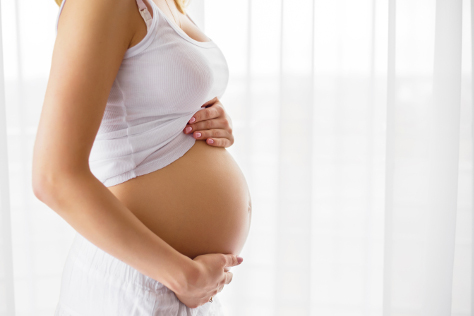The lowdown on your baby bump
What to expect from your growing pregnancy bump

When will my baby bump begin to show?
So you’ve done all the tests and been to the doctors, you know you’re pregnant but when will your bump begin to show?
It’s usual for a bump to begin showing somewhere between the 12 weeks pregnant and 16 weeks pregnant mark as your uterus begins to rise up from the pelvis sometime after 12 weeks. It’s important to remember though that there really is no right time for your baby bump to begin showing, everyone is different and certain factors will influence how quickly that bump starts appearing.
If this isn’t your first pregnancy you’ll probably show earlier than you have done previously as your muscles aren’t as tight as they used to be.
Measuring your bump
Your bump will be measured by your midwife during your routine antenatal appointments. She’ll ask you to lie down and will measure from the top of your pubic bone to the top of your uterus using a tape measure. This is known as the symphysis-fundal height measurement, and is used to monitor the growth of the fetus. This measurement is recommended to begin at 26 weeks though some women who have complications may be offered growth scans from 24 weeks.
How big should my baby bump be?
Your symphysis-fundal height measurement in centimeters roughly corresponds to the number of weeks pregnant you are, however bump size varies from person to person and there is no definitive size your bump should be.
If your measurements are outside of the normal range, your midwife will probably suggest an ultrasound scan called a growth scan to get a better idea of why your baby may be on the larger or smaller size. Possible reasons may be down to your due date being off, or gestational diabetes, which can develop in the third trimester.
What else affects the size of the bump?
There are various other factors that may affect the size of your bump. These are nothing to worry about but could explain why someone else’s bump looks bigger or smaller than yours:
-
Mother’s figure - Tall women with a longer body have more room for the baby to spread out, whereas petite women have less room and so may have a larger bump
-
Number of pregnancies – uterine muscles are normally tighter during first pregnancies and so bumps tend to be smaller
-
Number of babies – chances are if there’s more than one baby the bump is going to look bigger
-
Amount of fluid – more amniotic fluid could make your bump look larger
-
Baby’s position – If the baby has its back to the front of the mothers bump, its arms and legs are tucked away, whereas if the back is lying next to the mother’s back, its arms and legs will be sticking out and could create a bigger bump
If I have a big bump will I have a harder birth?
A big bump doesn’t necessarily mean you’ll have a big baby - as mentioned before you could just be carrying more fluid than most. If your baby is on the larger side however, it doesn’t mean your birth will be harder than that of a smaller baby.
What if my bump stops getting bigger?
You should arrange an extra antenatal appointment with your midwife if you are concerned about the growth of your bump. If they suspect a problem they will refer you for further examination.